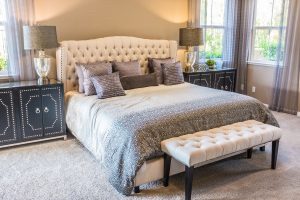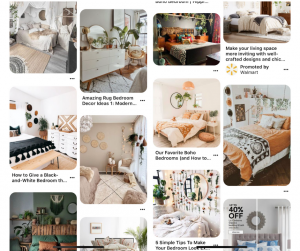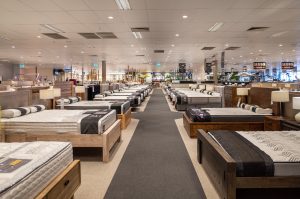It’s a phenomenon we’ve all experienced at least once as a consumer.
You walk into a store, look around a bit, and leave without buying anything.
Why? Are you just passing the time? Or we’re you unable to find what you were looking for exactly?
According to Retail TouchPoints, 96% of global shoppers have left a store without making a purchase.
The percentage of consumers that are ready to make a purchase is relatively low when compared to shoppers that are researching or just identifying their problem.
It’s a lifecycle we like to call the Buyer’s Journey.
What is the Buyer’s Journey?
The Buyer’s Journey is a process all consumers go through, regardless of what they are purchasing. This process is how buyers become aware of, consider, and evaluate, and finally decide to buy a new product or service.
The Buyer’s Journey is broken down into three stages; the Awareness stage, the Consideration stage, and the Decision stage.
Awareness Stage
The first stage in the Buyer’s Journey is characterized by the buyer identifying they have a specific problem or opportunity.
For example, Kacey and Aly just bought a new house. As first-time home buyers, they are looking to purchase new bedroom furniture to compliment their new master suite. They’ve identified that their old, second hand, mismatched furniture doesn’t reflect this new chapter in their lives. They have a vague idea of what they’re looking for but haven’t started to think about color, finish, style, or individual pieces yet.
This stage involves a lot of “educational” research to understand better articulate the specific wants and needs of the buyer.
Consideration Stage
Once the buyers have identified their problem, they move into the Consideration Stage of the Buyer’s Journey. Here, the buyers are specific about their problems or opportunity.
Kacey and Aly have done enough “educational” research to know they want a bedroom set that will match their boho-chic style. They would prefer a solid wood bed frame, with underhand drawers for additional storage. The girls aren’t fixed on a color, but they know they want something both bold and feminine. Kacey and Aly also know that in addition to a bed frame, they want two nightstands and two dressers, one short with a mirror, and one taller with more drawers.
The type of research done in the consideration stage is more committed. Buyers here are researching all their available options given the specifics they’ve set in place. They rule out options that can’t provide them their desired solution, and they even go so far as to compare prices and additional factors.
Decision Stage
The final stage is the favorite among businesses: the Decision Stage. This is where a purchase is being made.
After researching their preferences on designs, colors, and availability of matching pieces, Kacey and Aly find three potential bedroom furniture sets. All three offer the individual pieces they want in various colors from which to choose. For Kacey and Aly, it comes down to price, how quickly they can have the furniture delivered, and if there is a setup fee. They ultimately choose to purchase from a higher-end furniture store that offered a competitive price and free delivery and set up.

Identifying Where Consumers are in the Buyer’s Journey
It can sometimes be challenging to determine where consumers are in the Buyer’s Journey, especially for brick and mortar stores.
While we would love to assume that each store visitor is ready to make a purchase, that’s simply not the reality.
Identifying where visitors are in the buyer’s journey when they’re in-store can allow you to alter your approach and customize their experience to help them work through whatever stage they’re in.
The best way to find out where they sit in the buyer’s journey is to ask!
When Kacey and Aly started their bedroom makeover, they visited a few stores first. In some, they felt attacked and pressured to buy that day. But when they walked into Mave’s Furniture For All, their experience was much different.
“Good morning, ladies! What can I help you find today? Looking for anything specific or are we just looking for inspiration today?” The girls we’re immediately greeted by Dale, an older gentleman sporting a navy blue suit with a pink carnation in the pocket.
“Hello! We’ve just bought a new house, so we’re looking to replace our old mismatched furniture, and find something that reflects both our styles. We aren’t exactly sure what we want, we’re just starting to brainstorm. I have a lot of ideas on Pinterest I’d love to see in person” Aly could tell right away their experience was already going to be better here than the other stores they visited.

“Why don’t you show me your board and we can see what we have on the floor that will spark some inspiration!” Dale leads the girls to his desk, offering them a seat.
Recognizing the girls were just starting, Dale asked investigative questions he knew would help them through the awareness stage of their buyer’s journey. He wondered how they were beginning their bedroom makeover journey and asked them to describe each of their unique styles. He wanted to know how they’d been inspired previously, and what each girl thought their bedroom should represent.
Dale sent the girls home after their first visit with a catalog of all the different styles and pieces they carry, as well as color fabric swatches for them to continue their initial design brainstorm. He included two brochures from competitors, too, knowing that they might appreciate someone else’s designs as well.
After a few days, the girls came back to see Dale with more specific ideas and a better direction of what they wanted.
Again, Dale sat them down. The girls were now in the Consideration Stage of their buyer’s journey.
He looked through the catalog to see what the girls indicated they liked and asked if they had a list of “must have’s” and “avoid’s” so he could help narrow down their specific wants.
He was able to narrow down the specific pieces they wanted, as well as the general look they were going after. The girls wanted their new bedroom to be a space where they were both represented. They chose a light color pallet, as well as chic and modern furniture styles.
Dale led them around the showroom floor, pointing out displays that portrayed the look they were aiming for. Aly and Kacey were thrilled to see their ideas in real-life. They loved being able to touch and feel various fabrics and see how their future room could be laid out spacially.
Their ability to envision themselves in their own space was becoming more of a reality with each display.
Dale continued to show them display after display, taking note of what they liked best and disliked most about each bedroom set. He asked them about their flexibility with design and color, and finally, what their budget was. He wanted to make sure he could fulfill their needs within their price range.

Dale mentioned to the girls that Mave’s Furniture For All was getting all-new design selections in a few weeks. The change in the season would bring new styles from new designers. If they didn’t see anything today they loved, they should wait.
A few weeks later, the girls came back to see the new selections. Dale was happy to see they’d come back, and not chosen to settle with another store. He asked if anything changed or if they were ready to see the new options. The girls let him know that they had seen other options they liked, and now, it came down to two things: price and delivery/set up fees.
Within the hour, Aly and Kacey found the bedroom set they’d been waiting for, and they were over the moon when Dale offered them free delivery and set up if they purchased that day.
The next night, Aly and Kacey fell asleep in their new bed, happy as ever.
Supporting Consumers Through the Buyer’s Journey
You can offer support! No matter where consumers are, you can help them.
Buyers at any stage don’t like feeling hounded or pressured to make decisions. The best chance of making a buyer out of your visitors is to support and educate them. Make them see you as a valuable source of information instead of a pushy salesperson.
In our example above, Dale was able to recognize what stage Aly and Kacey were in accurately. He educated them throughout each stage, offering them helpful resources along the way – even if they were from other competitors. Because of this, Aly and Kacey grew to trust Dale. This helped them most when deciding to buy from his store.
Buyer psychology hints that when customers are comfortable with a sales associate and genuinely trust him or her, they’ll be more likely to return their business. Empowered and educated customers take the desired actions we, as business owners, want them to take!
How Kiosks can Help Throughout the Buyer’s Journey
One tool we’ve found to be very helpful for identifying where customers are in the buyer’s journey is feedback kiosks.
Asking store visitors a series of questions while they browse is a great way to understand their intentions. You can tailor your approach and offer them the support and information they need. This support will help all them to travel through the buyer’s journey smoothly.
Asking a question like “What is your purpose for stopping in today?” is a great way to measure how far along customers are in the buyer’s journey.
Ultimately, being able to accurately identify where store visitors are in the buyer’s journey is crucial for providing the best customer service. If you come on too strong to customers who are just starting, you might overwhelm and scare them off. Opposite that, if you come off too vague, they might perceive you as disinterested in their business, directing them elsewhere.

